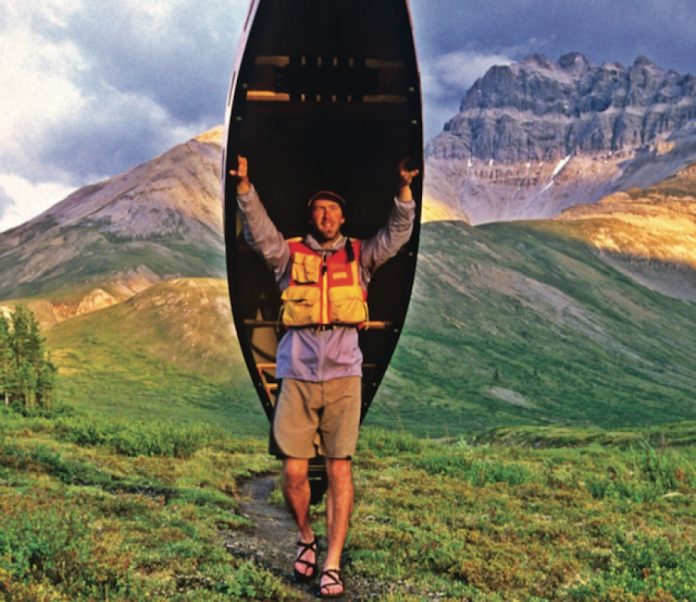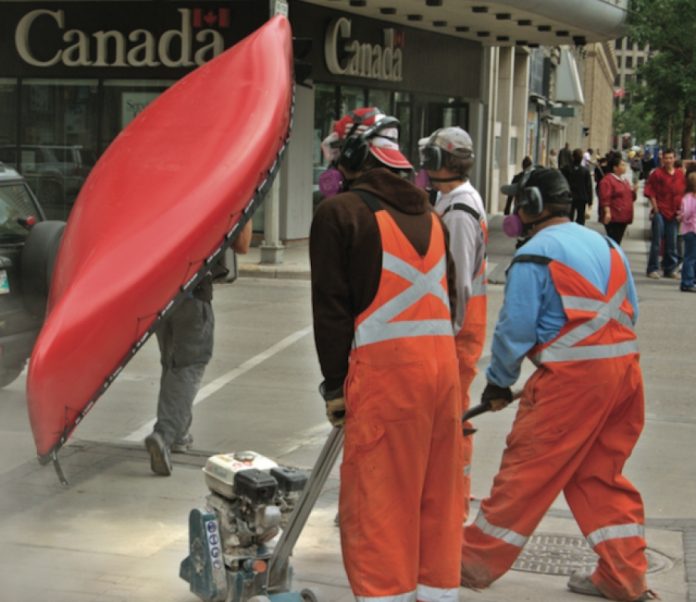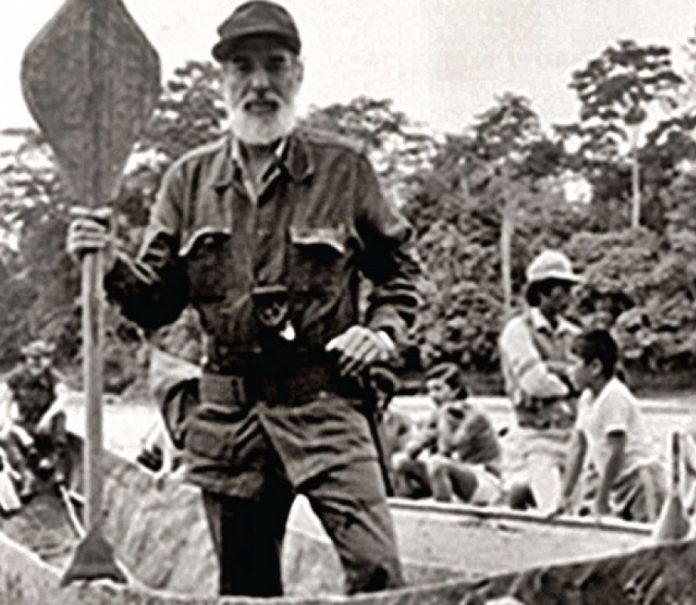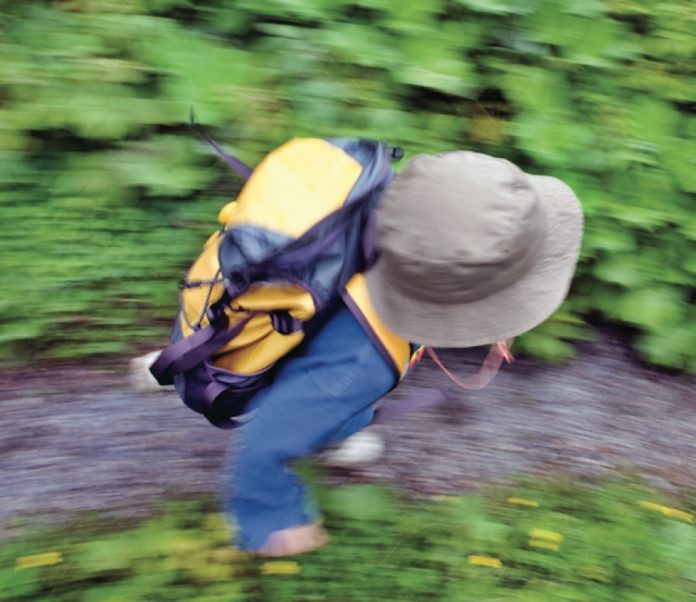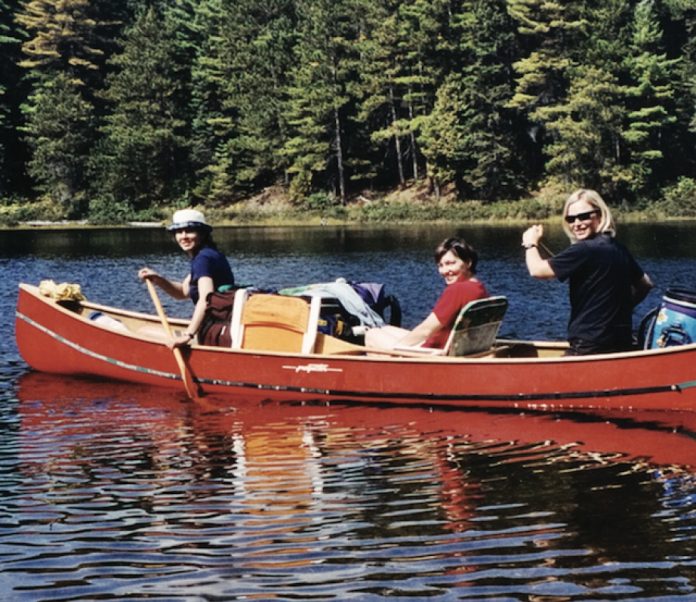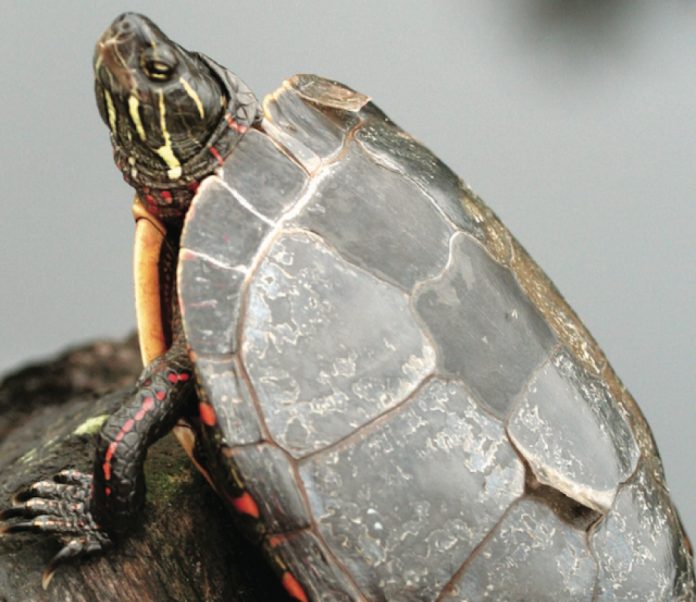Something valuable from my childhood canoe trips has been lost. It’s not the Swiss Army knife my dad gave me when I was nine (that’s lost too, but don’t tell him). It’s not the oversized poncho that was supposedly the only piece of raingear a growing canoeist needed (I finally outgrew it).
What’s lost is the single portage carry. Time was we would land at a portage, each paddler would shoulder a canoe or a pack and two paddles and walk the portage trail exactly once.
Canoe tripping should be about leaving not just civilization behind, but its trappings too.
Now we get to a portage and become beasts of burden. We hoist a pack full of video cameras, stoves, sleeping pads, hammocks, water filters, solar chargers, cameras and coffee makers. With knees about to hyperextend we bend over and collect a few handfuls of Pelican cases, water bottles and fishing rods before shuffling to the end of the portage. After dumping the first load we retrace our steps to see if the pile is any smaller. Countries have been invaded with less sophisticated supply lines than those on modern-day portage trails.
Ray Jardine would not approve. Jardine has sailed around the world, hiked the longest trails in America and once pioneered the world’s hardest rock climbs. He has sea kayaked the Northwest Passage and canoed many northern rivers including the Kazan and Coppermine.
Through it all he saw himself and others suffer from bent spines and cluttered campsites. In 1992 he self-published The Pacific Crest Trail Hiker’s Handbook, a trail guide that tells readers not just where to hike, but how to hike. Jardine thinks if hikers are carrying more than 12 pounds of gear they are missing the point and might as well stay home. Why bother lugging around a sleeping pad when you can sleep on “leaves, pine needles, and duff” he wonders.
No doubt most canoeists would dismiss that with a snort between laboured puffs into a full-length Therm-a-Rest (the one with a fuzzy top). But it wasn’t long ago that that was how it was done. Until I was 11, when I first saw the temptress that was a roll-up drybag, everything I needed for a canoe trip would fit into a bedroll that rolled up smaller than a rugby ball.
True, it was wound pretty tight, you wouldn’t want to be nearby when it sprang open, but everything I needed for two weeks of lake-hopping north of Superior was packed in the folds of that thin sleeping bag. Taking my reliance on gear as a measure, I was more of a man then than I am now, and I hadn’t even hit puberty yet.
I’ve since been so seduced by stuff sacks full of supposed essentials I’m little more than a burro on the portage trail and an equipment manager at the campsite. These aren’t roles that lend themselves to enjoying the outdoors. Canoe tripping should be about leaving not just civilization behind, but its trappings too.
As Jay Morrison points out in his feature on shedding pounds, the ability to reclaim a fast and light style of travel in the wilderness requires just a little discipline. I’m going to take his advice and try to be more like my friend Dave. When we paddled the French River over Thanksgiving a few years ago Dave showed up with a drybag not much bigger than my bedroll of yore. I think he enjoyed the trip, but I can’t be sure; I was too busy fussing with gear to notice.
If I ever find my Swiss Army knife, I hope I have the sense to leave it behind in favour of a knife that doesn’t have a corkscrew, magnifying glass and toothpick.
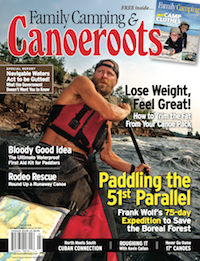
This article first appeared in the Fall 2008 issue of Canoeroots Magazine.
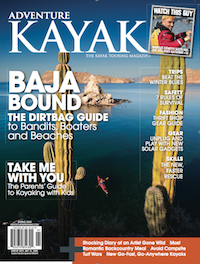 This article first appeared in the Spring 2009 issue of Adventure Kayak Magazine. For more great content, subscribe to Adventure Kayak’s print and digital editions here.
This article first appeared in the Spring 2009 issue of Adventure Kayak Magazine. For more great content, subscribe to Adventure Kayak’s print and digital editions here.


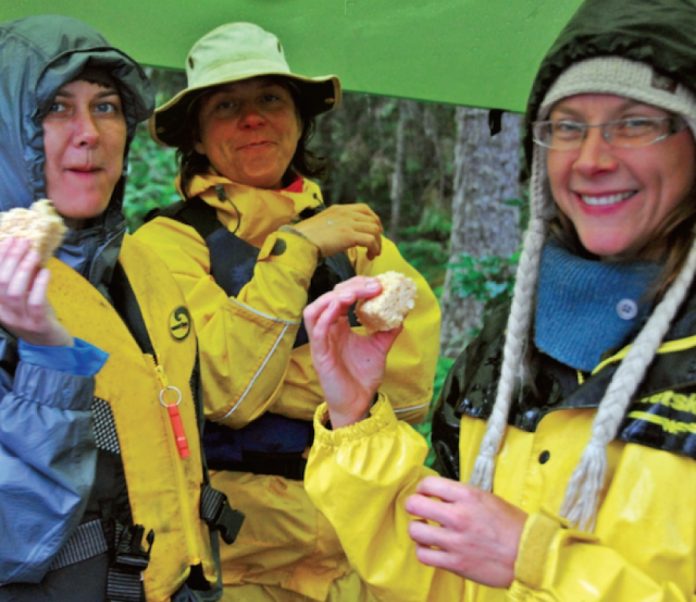
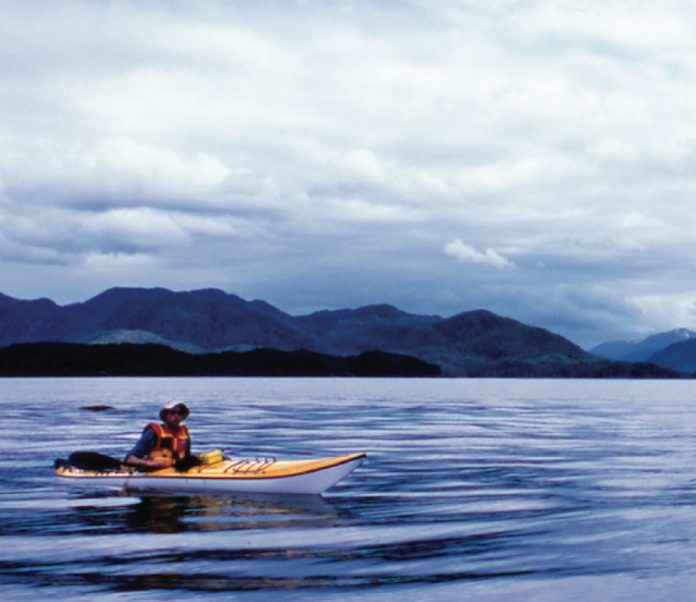
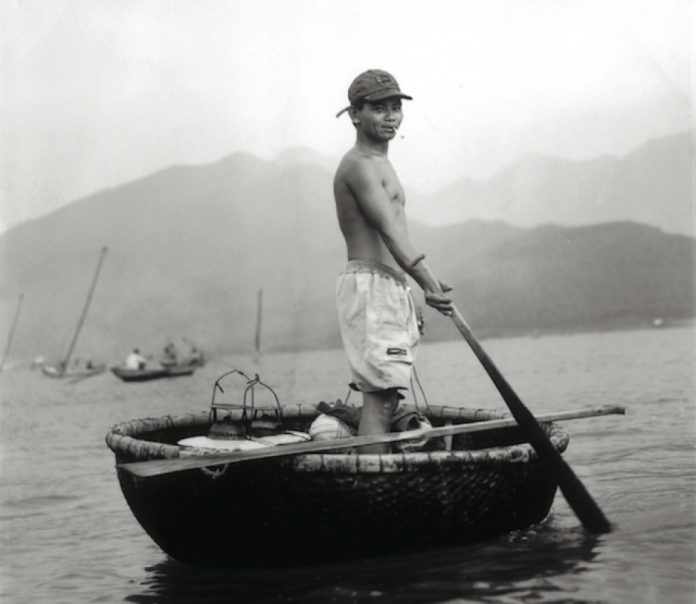
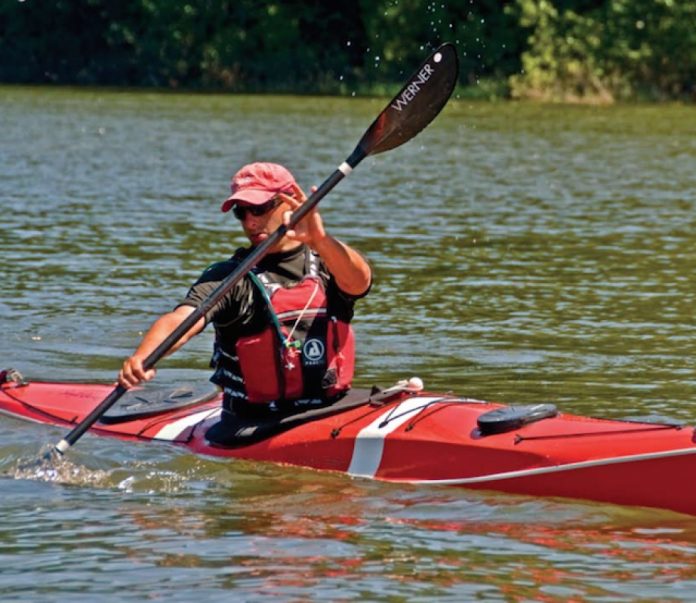
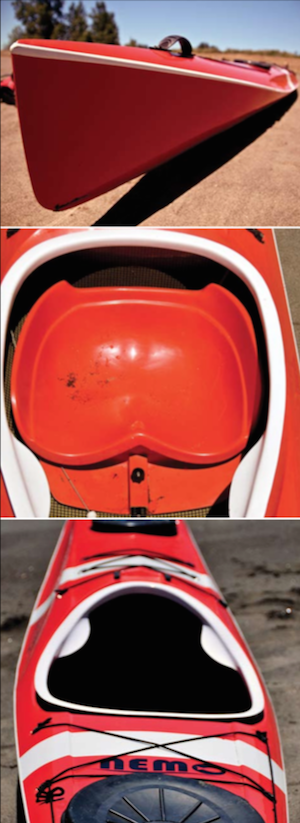
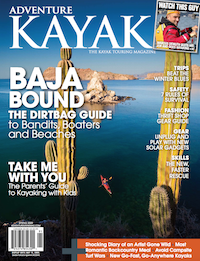 This article first appeared in the Spring 2009 issue of Adventure Kayak magazine. For more boat reviews, subscribe to Adventure Kayak’s print and digital editions
This article first appeared in the Spring 2009 issue of Adventure Kayak magazine. For more boat reviews, subscribe to Adventure Kayak’s print and digital editions 